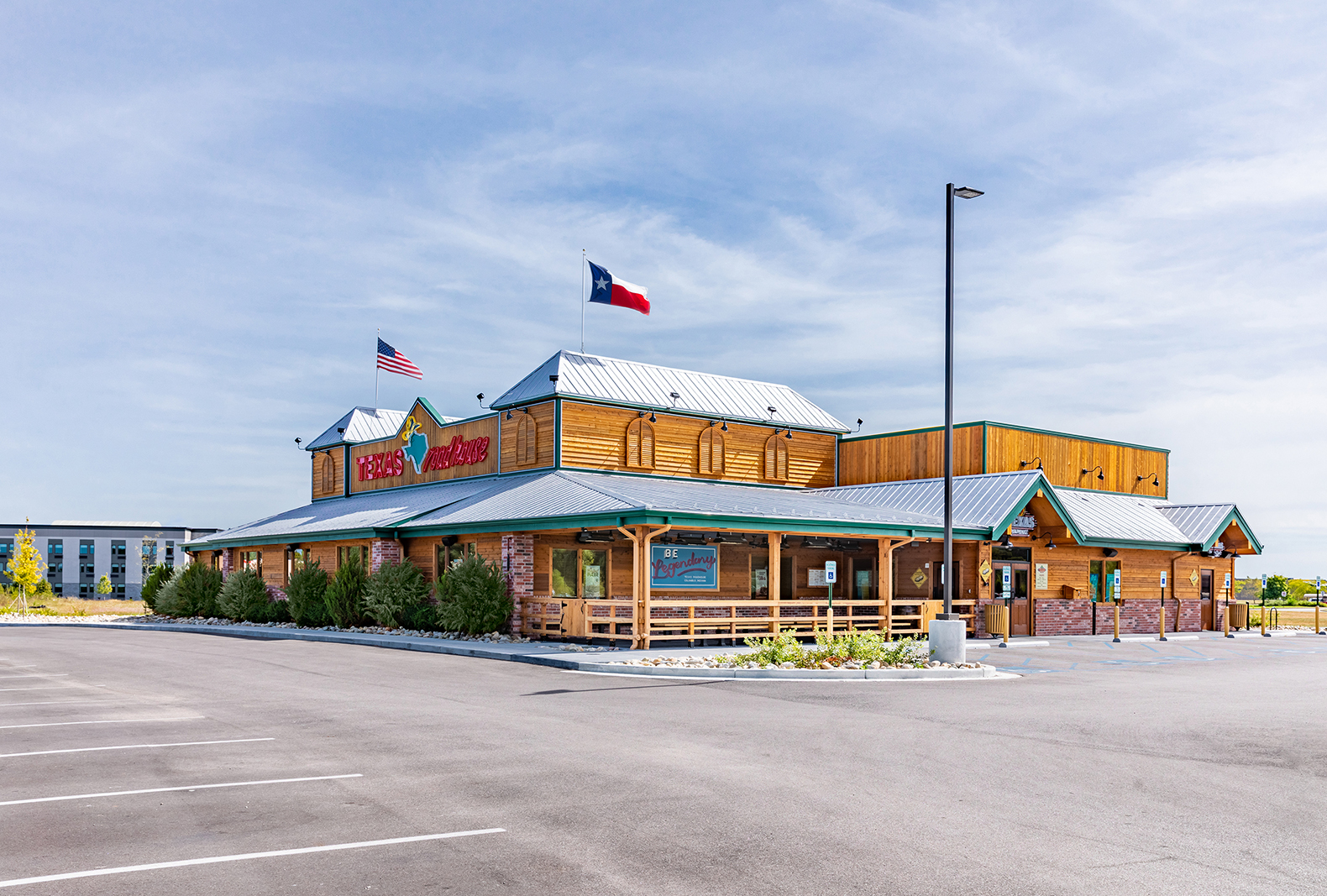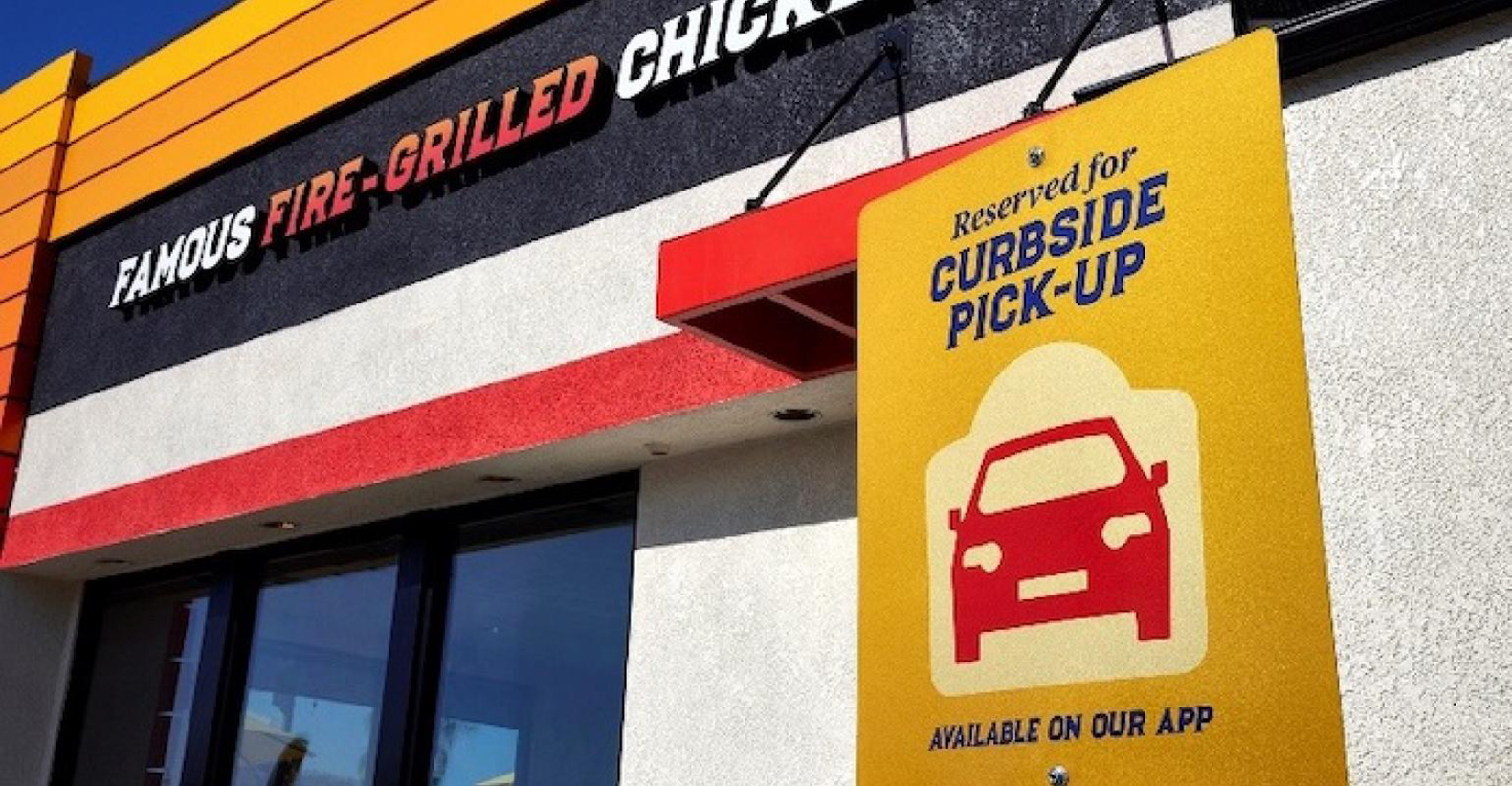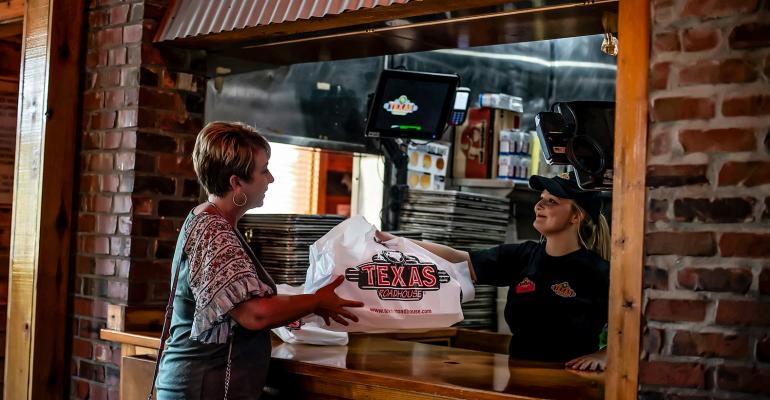Hospitality had always been considered a high-touch industry. But when the world shut down in March 2020 because of the COVID-19 pandemic, restaurant brands scrambled to find ways to provide their delicious products in a no-touch environment.
Now they are looking to hold on to those off-premises sales, which exploded in the vaccine era. And for many brands, the low-hanging fruit in off-premises business is takeout and curbside programs.
Jerry Morgan, CEO of the 600-unit casual-dining Texas Roadhouse Inc., said off-premises made up about 7% sales in 2019 before the pandemic. Nearly two and half years later, that has settled into 14-15% of sales for the Louisville, Ky.-based steakhouse brand, and Morgan wants to retain that.
“We have stores that are doing more than that,” Morgan said. “My expectation is — and every effort will be made — to maintain at least that.” The company also owns Bubba’s 33 and the fast-casual Jaggers.
“I would like to hold on to those incremental sales,” he added. “And I do believe that we're executing to-go at a much higher level and we're delivering an experience for our guests that we're proud of. We are now very committed to that segment of our business.”

Those steep gains in curbside and takeout sales have caught the attention of operators across all restaurant segments. Burger King, a division of Toronto-based Restaurants Brands International, has introduced a prototype with curbside parking spots. Chili’s Grill & Bar, a division of Dallas-based Brinker International, has heightened the use of its pre-existing curbside pickup spots. And El Pollo Loco Holdings, a Costa Mesa, Calif.-based fast-casual brand, installed technology-enabled curbside pickup areas.
A survey by Medallia Zingle, a San Francisco-based customer-engagement technology company, found that 87% of consumers thought businesses should continue to offer options like curbside pickup to limit in-person contact. However, of those same consumers, 45% said their curbside pickup experience had “been a little rocky or poor.”
Morgan said Texas Roadhouse has worked on making sure curbside pickup and to-go orders are accurate to avoid customer disappointment.
“The most important thing is when they get home and they unpack all of their food: Did they get everything that they ordered?” Morgan said. “Order accuracy is the key component to a satisfied consumer.”
While errant orders made in the dining room can be fixed quickly and easily, he added, those curbside and takeout orders are less easy to repair.
Order accuracy was something that the Texas Roadhouse team addressed early on as operators scrambled to adapt to curbside and to-go sales.

Burger King has introduced a prototype with curbside parking spots.
Morgan of Texas Roadhouse said the company, soon after the pandemic was declared, started systemwide meetings with corporate executives and operators at 9 a.m. and 9 p.m. to assess what was working and what was not.
“I don't know that we have completely perfected it,” he said, “but we have gotten a lot better, I believe. We understand what our consumer would like from us, and I think we're working extremely hard on figuring out our existing stores and how the prototype [of the future] needs to function and operate at a high level to serve our to-go visit.”
Part of that is providing online and app-based order and pay technology, Morgan added.
The company has even provided for Texas Roadhouse’s peanut experience, having bagged nuts on hand to include in to-go bags — replicating the peanut barrels in in-store waiting areas.
“If somebody asks, we will absolutely have peanuts available,” Morgan said. “We'd love to add value to the to-go experience with a bag of our peanuts.”
Texas Roadhouse operators are also highly aware that curbside and to-go customers are now part of the brand’s bread and butter — and that extends to the brand’s beloved rolls and honey-cinnamon butter.
“One thing we do know is that they want more bread and more honey cinnamon butter,” Morgan said. “We can never put enough bread and butter in that bag. … We have to realize that in the restaurant, if they want more bread and butter, we just walk it over to them immediately. But when they're at home and they're chowing down on our bread and butter, we need to make sure that they have plenty of it.”

The process of getting that extra offering right is still ongoing, Morgan said. “We're trying to adjust what is the proper amount of our rolls and our honey-cinnamon butter to go along with each order,” he said. “It is really about making sure that they have everything that they need when they are home. Sometimes they have extra ketchup and maybe even a salad dressing, but they don't usually have extra rolls and honey-cinnamon butter around the house. We have to deliver on that promise.”
What began with Texas Roadhouse’s numbered parking stalls, which took the place of tables when the pandemic was first declared, to today’s special pickup windows and to-go rooms, the growth of off-premises is here to say, Morgan said.
Morgan likened the progress to going from a Sonic Drive-In format to Dairy Queen pickup window.
“We just evolved over that first six months in so many ways,” said Morgan, who was overseeing 130 stores as a regional partner when the pandemic hit. He was named CEO when brand founder Kent Taylor died in March 2021.
Part of the equation was getting the information technology component up and running, he noted.
“Our IT department figured out how we communicate to the guest,” Morgan said. And as pandemic restrictions eased, he added, “We had to figure out how to blend the dining-room experience with the still very high demand on the to-go side.”
Morgan said the brand has “repositioned a few things in our future prototype to make it a little more convenient for our operators to get food from the kitchen to the to-go room or where we pack and deliver the food.”
He said that involves changing the flow of how the food moves through the kitchen to get to the consumer pickup point.
Consumer patterns have changed in favor of curbside and to-go, he added.
“I think something that America got away from a little bit was having those family dinners,” Morgan said. “I don't honestly believe that the consumer is having more family dinners out there. And they're really enjoying that we cook for them, and they get to eat at their own dining room table.”
Contact Ron Ruggless at [email protected]
Follow him on Twitter: @RonRuggless





